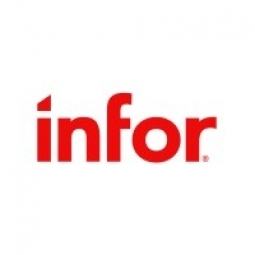Customer Company Size
Large Corporate
Region
- America
Country
- United States
Product
- Birst Business Analytics
Tech Stack
- Business Intelligence (BI)
- Data Analytics
Implementation Scale
- Enterprise-wide Deployment
Impact Metrics
- Productivity Improvements
- Cost Savings
- Customer Satisfaction
Technology Category
- Analytics & Modeling - Big Data Analytics
- Analytics & Modeling - Real Time Analytics
Applicable Functions
- Discrete Manufacturing
- Sales & Marketing
Use Cases
- Predictive Maintenance
- Inventory Management
Services
- Data Science Services
About The Customer
True Textiles is the world’s leading manufacturer of proprietary and open-line commercial textiles. The company offers a wide range of textile products and value-added services that contribute to the beauty, comfort, and performance of various spaces such as offices, hospitals, auditoriums, hotels, arenas, and more. True Textiles does everything from producing its own yarns to distributing its own fabrics, creating a vertical structure that is key to some of the organization’s boldest sustainability initiatives—including the introduction of the world’s first biobased panel fabric. With multiple manufacturing facilities in the U.S. and a triple-bottom-line approach that balances economic, environmental, and social equity concerns, True Textiles provides panel fabric, upholstery, wall covering, cubicle curtains, and more.
The Challenge
True Textiles, a leading manufacturer of commercial textiles, was using a traditional, on-premise Business Intelligence (BI) solution for nearly a decade. While the solution helped to combine the company’s disparate data sources, it was difficult to use, with limited functionality. Its costly licensing model made expansion of the deployment prohibitively expensive, so a small group of administrative and IT users ran reports for the rest of the organization. As additional questions arose, reports were modified and run again in a time-consuming, cumbersome process that reduced employee productivity and slowed decision-making. As their expectations shifted, they began to look for an easy-to-use, self-service solution that would give them quick access to advanced functionality. They needed a solution that could expand beyond their sales department to help them cost-effectively improve performance across the organization.
The Solution
After evaluating the BI market, True Textiles determined that, without augmentation from another costly reporting solution, data discovery tools and other analytics solutions could not match the quality of Birst’s pixel-perfect reporting. Birst offered the most extensive and complete functionality, at the lowest cost. Birst’s affordability is making it possible for them to deploy Birst wherever it’s needed, so that their users can gain immediate business insight that leads to more informed, faster decisions. Birst also offered the ability to automate distribution of regular reports to the company’s sales force. They are using Birst to not only automate regular reports that are proactively pushed out to their employees, but also to provide self-service, interactive dashboards that empower users to find exactly the information they need, when they need it.
Operational Impact

Case Study missing?
Start adding your own!
Register with your work email and create a new case study profile for your business.
Related Case Studies.

Case Study
Remote Monitoring & Predictive Maintenance App for a Solar Energy System
The maintenance & tracking of various modules was an overhead for the customer due to the huge labor costs involved. Being an advanced solar solutions provider, they wanted to ensure early detection of issues and provide the best-in-class customer experience. Hence they wanted to automate the whole process.

Case Study
Predictive Maintenance for Industrial Chillers
For global leaders in the industrial chiller manufacturing, reliability of the entire production process is of the utmost importance. Chillers are refrigeration systems that produce ice water to provide cooling for a process or industrial application. One of those leaders sought a way to respond to asset performance issues, even before they occur. The intelligence to guarantee maximum reliability of cooling devices is embedded (pre-alarming). A pre-alarming phase means that the cooling device still works, but symptoms may appear, telling manufacturers that a failure is likely to occur in the near future. Chillers who are not internet connected at that moment, provide little insight in this pre-alarming phase.

Case Study
Aircraft Predictive Maintenance and Workflow Optimization
First, aircraft manufacturer have trouble monitoring the health of aircraft systems with health prognostics and deliver predictive maintenance insights. Second, aircraft manufacturer wants a solution that can provide an in-context advisory and align job assignments to match technician experience and expertise.

Case Study
Integral Plant Maintenance
Mercedes-Benz and his partner GAZ chose Siemens to be its maintenance partner at a new engine plant in Yaroslavl, Russia. The new plant offers a capacity to manufacture diesel engines for the Russian market, for locally produced Sprinter Classic. In addition to engines for the local market, the Yaroslavl plant will also produce spare parts. Mercedes-Benz Russia and his partner needed a service partner in order to ensure the operation of these lines in a maintenance partnership arrangement. The challenges included coordinating the entire maintenance management operation, in particular inspections, corrective and predictive maintenance activities, and the optimizing spare parts management. Siemens developed a customized maintenance solution that includes all electronic and mechanical maintenance activities (Integral Plant Maintenance).

Case Study
Hospital Inventory Management
The hospital supply chain team is responsible for ensuring that the right medical supplies are readily available to clinicians when and where needed, and to do so in the most efficient manner possible. However, many of the systems and processes in use at the cancer center for supply chain management were not best suited to support these goals. Barcoding technology, a commonly used method for inventory management of medical supplies, is labor intensive, time consuming, does not provide real-time visibility into inventory levels and can be prone to error. Consequently, the lack of accurate and real-time visibility into inventory levels across multiple supply rooms in multiple hospital facilities creates additional inefficiency in the system causing over-ordering, hoarding, and wasted supplies. Other sources of waste and cost were also identified as candidates for improvement. Existing systems and processes did not provide adequate security for high-cost inventory within the hospital, which was another driver of cost. A lack of visibility into expiration dates for supplies resulted in supplies being wasted due to past expiry dates. Storage of supplies was also a key consideration given the location of the cancer center’s facilities in a dense urban setting, where space is always at a premium. In order to address the challenges outlined above, the hospital sought a solution that would provide real-time inventory information with high levels of accuracy, reduce the level of manual effort required and enable data driven decision making to ensure that the right supplies were readily available to clinicians in the right location at the right time.








